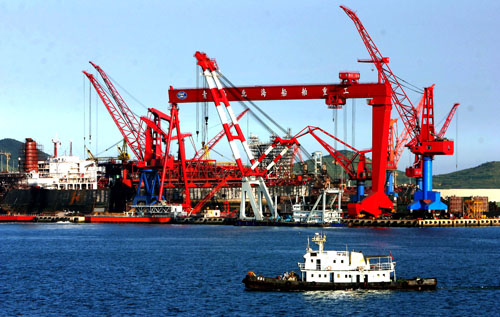摘要
硫酸盐还原菌 (SRB) 是一类广泛存在于自然环境中可以利用硫酸盐类物质作为呼吸代谢电子受体的厌氧类微生物,是造成金属腐蚀破坏和设备故障的主要原因之一,已经成为一个重要的研究课题。由于微生物活动的复杂性,生物膜内SRB与金属表面的相互作用缺乏深入的研究,其诱导腐蚀机理和腐蚀过程尚不清楚,难以进行有效的腐蚀预测。基于此,本文从SRB生物膜的呼吸代谢角度介绍了其诱导金属腐蚀的研究进展。介绍了SRB的生态特征和厌氧呼吸过程,重点综述了SRB腐蚀机理,包括阴极去极化、代谢产物腐蚀、浓差电池作用和胞外电子传递等理论,最后简要介绍了微生物腐蚀 (MIC) 研究的方法与技术手段。
关键词: 微生物腐蚀 ; 硫酸盐还原菌 ; 腐蚀机理
Abstract
Sulfate-reducing bacteria (SRB) are a group of diverse anaerobic microorganisms omnipresently in natural habitats and engineered environments, they use sulfur compounds as the electron acceptor for energy metabolism. SRB corrosion is one of major cause for corrosion damages and facility failures, making it an important research topic. Due to the complexity of microbiological activities and that there is a lack of deep understanding of the interaction between biofilms and metal surfaces in the present, therefore, it is still hard to predict and interpret the occurrence and the relevant mechanism of the SRB corrosion. In this review, the ecological characteristics and anaerobic respiration of SRB are introduced, focusing on the SRB corrosion mechanism, including cathodic depolarization, metabolite corrosion, concentration battery action, and extracellular electron transfer theories. Finally, the methods and tools of MIC research are briefly introduced.
Keywords: microbiological influenced corrosion ; SRB ; corrosion mechanism


免责声明:本网站所转载的文字、图片与视频资料版权归原创作者所有,如果涉及侵权,请第一时间联系本网删除。
相关文章

官方微信
《中国腐蚀与防护网电子期刊》征订启事
- 投稿联系:编辑部
- 电话:010-62316606-806
- 邮箱:fsfhzy666@163.com
- 中国腐蚀与防护网官方QQ群:140808414
点击排行
PPT新闻
“海洋金属”——钛合金在舰船的
点击数:7130
腐蚀与“海上丝绸之路”
点击数:5741





